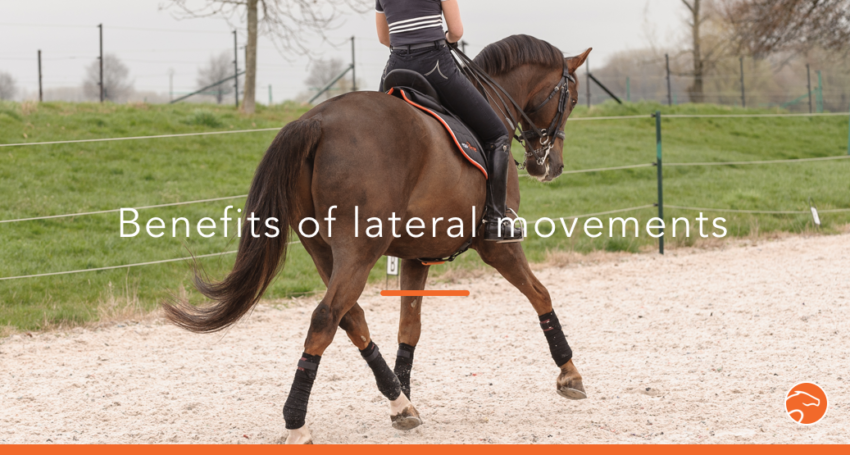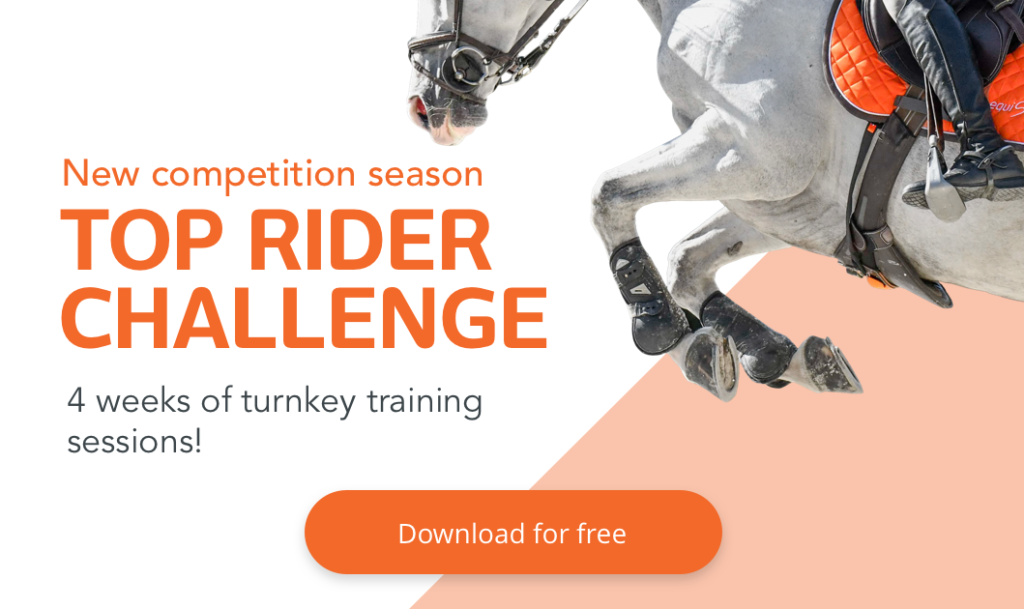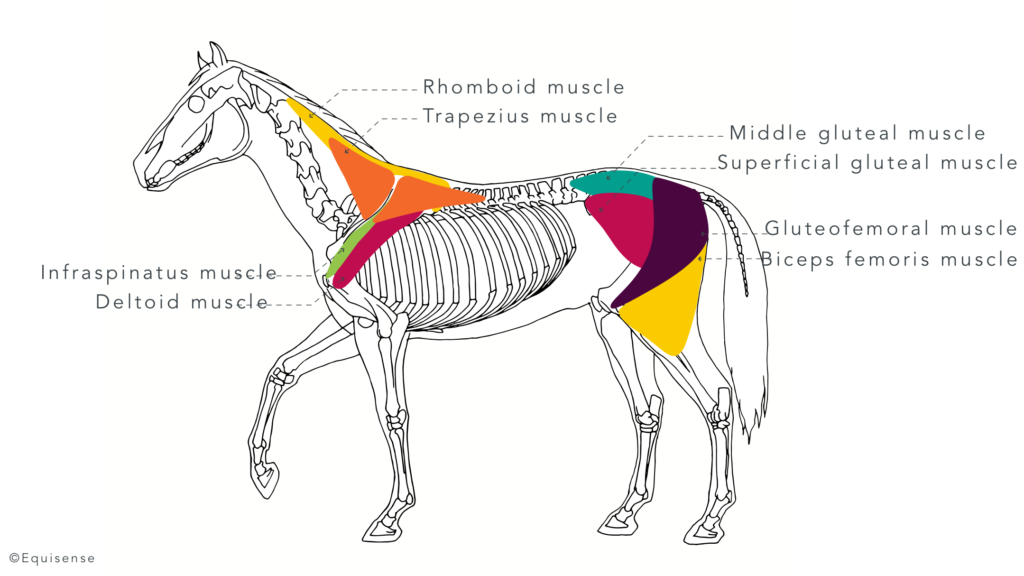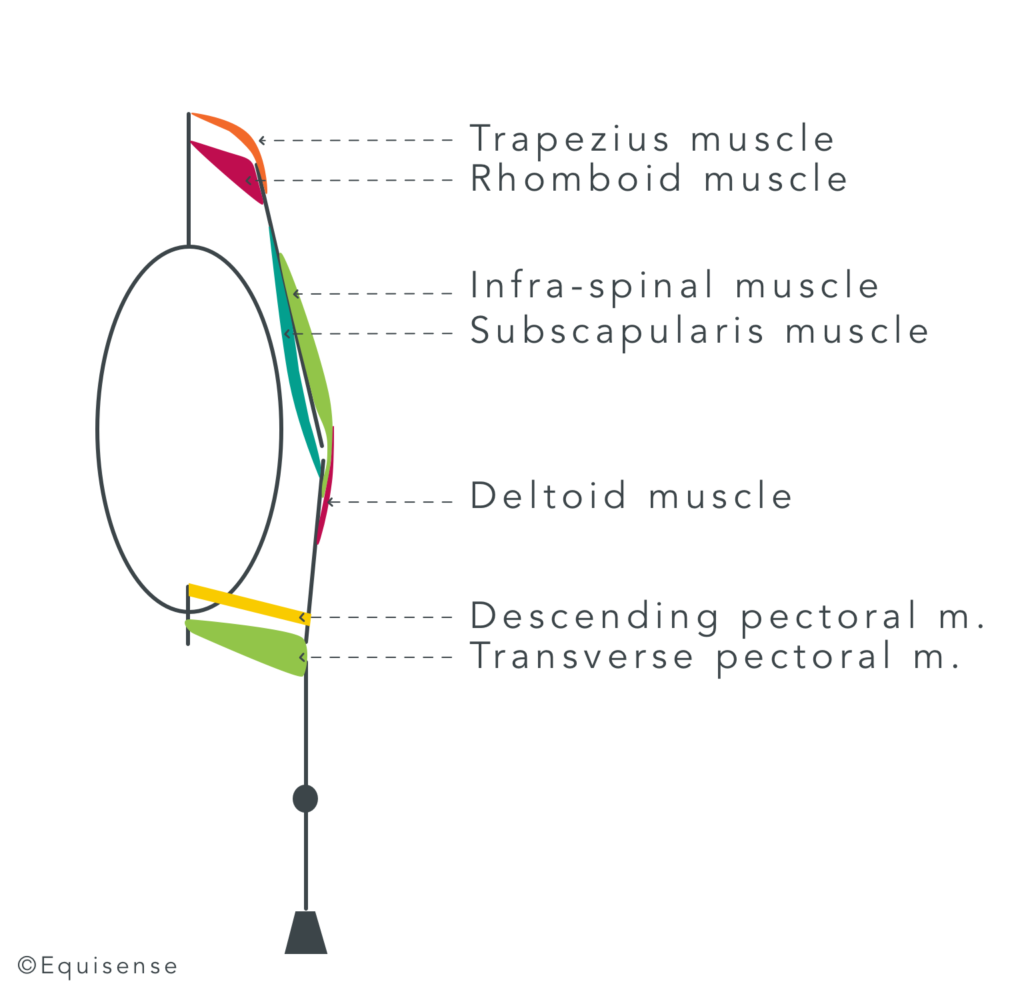
7 Reasons to Train Lateral Movements Every day
“Let’s do this, today we’re going to train the footsies crossings”: This sentence that made all the riders and ALL the horses cry. This sentence that we all feared and maybe still fear! Yet, … lateral movements are extremely beneficial for your horse, and not only for dressage horses! So jumping riders, in the saddle, take your stirrups off and go for the footsies crossings and with a smile please !!


In a previous article, I gave dressage training exercises to build your horse’s muscles, 2 of which being lateral movements. I explained very briefly that lateral movements had many advantages, without being able to go into too much details. It’s extremely frustrating 🤯. I therefore relieve my immense frustration by explaining here what happens when you do lateral movements.
Table des matières
Lateral movements help training adductor and abductor muscles 💪🏻.
What are abduction and adduction?
The peculiarity of lateral movements is that they involve adduction and abduction movements. These are movements of separation and approximation of the limbs.
The adduction occurs when a limb approaches the median lane (lane cutting the horse in its length in two). So an adduction is when a limb gets closer to the other limb.
The abduction is the opposite, it occurs when the limb deviates from the median lane, so when it deviates from the other limb.
Lateral movements therefore work the adductor and abductor muscles that are less involved by other exercises.

Abductor and adductor muscles
If we focus on humans, what are our adductor and abductor muscles?
At the level of the upper limbs are our pectorals which are adductors muscles. On the other hand, exemples of abductor muscles are muscles of the scapula (trapezius, deltoid, …).
Then, for the lower limbs, these muscles are called the group of adductors (rather easy to remember). Those are the painful inside thigh muscles that you have probably experienced after a sitting trot !! Finally the abductor muscles of the thigh, and well it is the gluteal muscles and the “tensor of Fascia Lata” which is on the side of the thigh.
If I do this parallel it is that in the horse is the same!

All this to show you that a simple shoulder inside is like body building 💪🏻. If you want your horse to look like Schwarzenegger it’s the ideal exercise. This is especially true since abductions and adductions are not “pure”. Indeed, since they are combined with a protraction / retraction movement. That is to say that when your horse spreads his forehead on a support he spreads it towards the side AND forward, which multiplies the muscular benefits by putting at work in particular the abdominal muscles for the posteriors.
Lateral movements work on the whole pelvis
You must have heard it a thousand times: “There, he lowered his hips, have you felt it?” To which you answer sluggishly “uh … riight …”. 🤷 But why are our coaches saying that ?? 🤔

Well you’ve maybe already noticed, the stifle and the hock of the horse do not allow extension / approximation movements. They are limited to flexion / extension movements. So to allow the hind legs to get closer or to move away, the hips must intervene. In fact, it is the same for our knees. If you want to bring your foot back inside, you will not be able to bend your knee inward. The rotation will be done by the hip.

Let’s think of when doing an half pass towards the right:
When the left hind leg is adducted (forward and inward), the abdominals on the left contract allowing the hind legs to move forward. At the same time the gluteal muscles on the left will relax. This allowing the sacro lumbar to swing towards the left. The muscles on the inside of the left thigh will then contract. As the pelvis tilts towards the left, the left hind leg can pass inside and cross the right hind. This flip-flop of the sacro lumbar by relaxation of the buttocks is the lowering movement of the hips that we were talking about.
In fact, the same occurs when they sleep standing on 3 legs! One of the hips lowers, the buttock is relaxed, the hind can then pass under the belly.
Lateral movements help shoulder musculation
The front legs have the same issue. The thorax’s shape and the position of the front legs (especially of the scapula) on this one makes hard to have a true movement of extension / approximation. In addition, the lower joints barely allow any movements on the side making the task even more complicated.
As a result, during adduction (approximation of the hind legs), it is the pectoral muscles (the chest) that will contract to approximate the front legs. By contracting, they will drag the entire shoulder down.
Conversely, when the front legs must deviate, it is the Trapeze and Rhomboid muscles that will contract to pull the shoulder upwards.

That’s why the lateral movements are very good to muscle the horse’s forehand.

7 reasons why you should train on lateral movements everyday:
Lateral movements are above all used to bother riders, but after that, one can use them for:
- Muscling the buttocks because they contract hard to deviate the hind legs
- Strengthen the abdominals because they contract in order to cross the hind legs
- Muscling the inside thighs in order to cross the hind legs
- Developing the pectoral (chest) through the crossing of the forelegs, particularly useful for jumping horses to support their trunk at landing
- Muscling the top part of the shoulders so the muscles around the withers and the exit of the neck that contract to spread the forelegs
- Improving the back’s mobility through to different kinds of rotations
- Improving the pelvis’s mobility, thus make it possible to limit the problems of the hips
📚Read more: 3 tips to efficiently build back muscles
📚Read more: This is how to muscle your horse’s chest
And all this goes without saying, that all horses, no matter the discipline, will gain from it! So dear jumping friends, no more excuses for avoiding lateral trainings! 😇
Till next article!
Camille Saute,
Resp. R&D at Equisense
Bibliography
Barone R., Anatomie comparée des mammifères domestiques, Tome I : Ostéologie – atlas. Vigot, Paris, 1976, pl. 6 (p. 21).
Denoix J.M., Biomécanique et gymnastique du cheval, Vigot, Paris, 2014, 189 p.
Cover image: ©Nathalie Hupin – Equisense